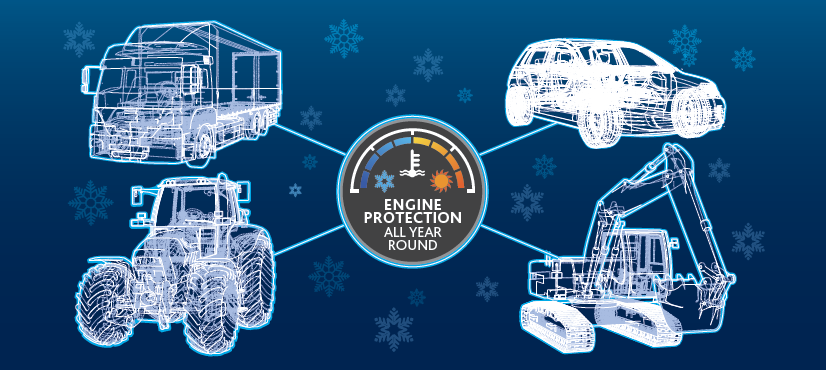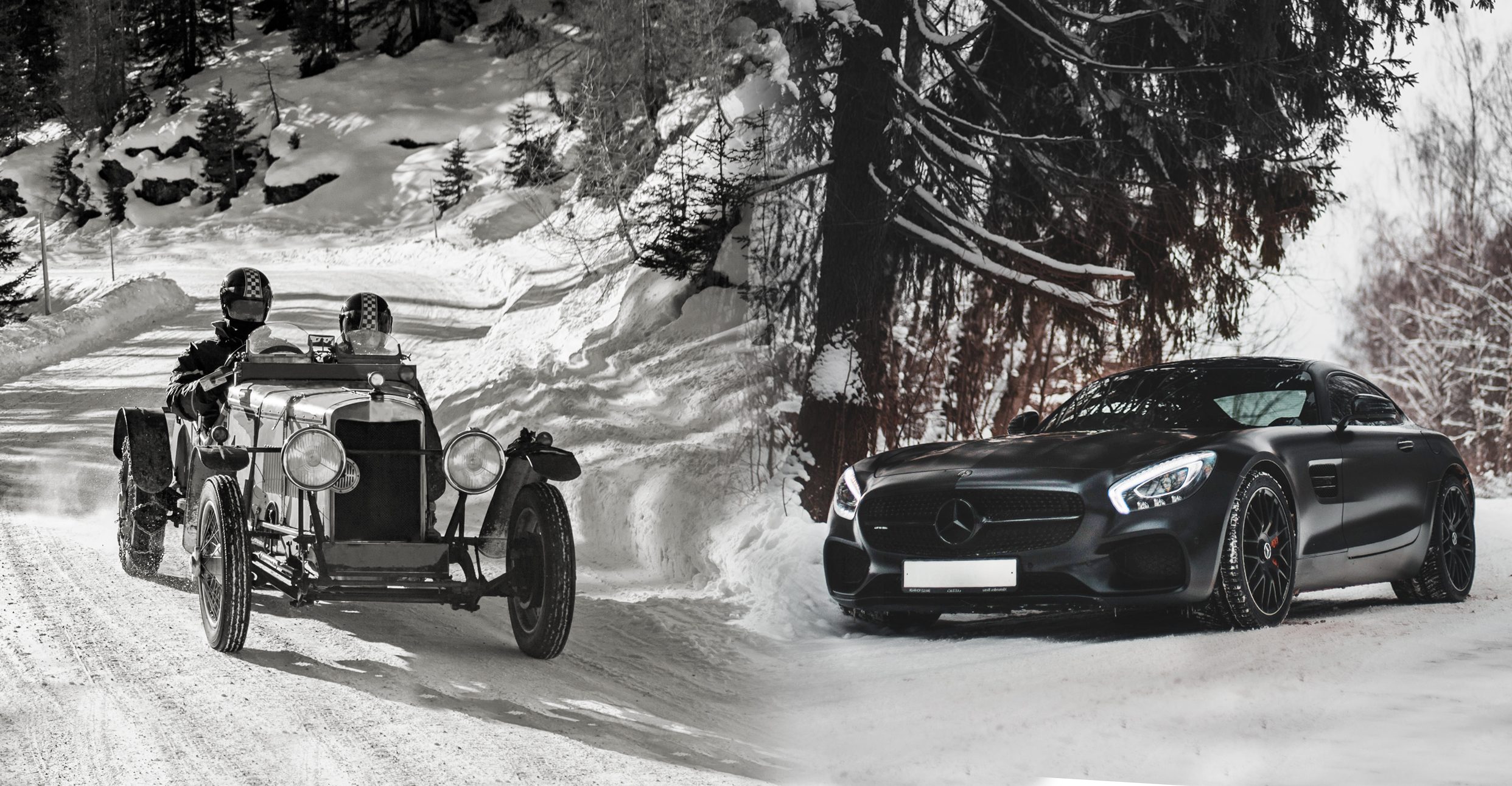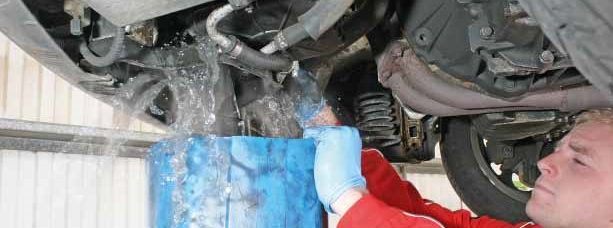Antifreeze & Coolants – How to find the right product for your vehicle

As winter looms, antifreeze and coolants prices could be set to rise due to the rising cost of raw materials.
The weather is an unknown factor but as we head into winter, cold spells will lead to increases in demand which will inevitably put pressure on tightening suppliers. We have tried to mitigate this uncertainty by securing a good early rate on orders to ensure there is enough supply at the best price for our customers.
Our new enhanced antifreeze and coolant range includes products for all types of vehicles (automotive, heavy duty and classic) to protect engines from frost damage, overheating and corrosion. We have also added three new products this year…

An engine’s coolant has a demanding job. It needs to be able to withstand freezing temperatures to avoid the risk of turning into a solid, which could cause internal damage to the engine such as fracturing a waterway and causing it to leak.
During the summer, it needs to maintain the engine’s temperature to ensure it doesn’t get too hot, along with help from the radiator and a mechanical or electric cooling fan. The coolant also needs to prevent internal corrosion of the engine, which can otherwise result in porous waterways and a build-up of silt that can block outlets and the water pump.
As Witham’s technical director Mick Kenyon explains:
“Coolants are made up of a combination of finely balanced additives that each have a specific role in the quality of the product. Water acts as the main heat-transfer fluid moving heat away from the engine block. Monoethylene Glycol (MEG), an organic compound, is added as it also provides heat-transfer but most importantly it lowers the freezing point and raises the boiling point of the water. Without MEG or a similar organic molecule, coolant would freeze readily and subsequently damage the engine.”
Water and MEG on their own would be corrosive to metals within the cooling system, such as cast iron, aluminium or solder. That means rust would quickly block the cooling system and overheating would occur. “Additives are used to preventcorrosion,” says Kenyon.
“In the case of the Qualube Blue, it is an example of an inorganic additive technology product (IAT). This means that the chemicals that protect against corrosion are inorganic in nature, such as borates, silicates and nitrates. Inorganic chemicals are mined from the earth and refined. IAT is a tried and tested classical method for protection.”
Most classic cars from the mid-1990s or before use a blue-coloured coolant (also called anti-freeze). Later and more modern engines can use a longer-lasting silicate-free, organic acid technology (OAT) based coolant. There’s also some confusion over the colour of coolant and its lifespan. For instance, blue-coloured coolant is generally regarded as lasting for two years before it needs changing, whereas pink-coloured coolant lasts for six years. But as Kenyon warns: “This is broadly true but colour is purely cosmetic and gives no indication of the technology or quality of the product. I would be wary about making decisions based purely on colour.”

Renewal Intervals
The recommended intervals for changing coolant appear to be around two years for blue-coloured coolant and six years for pink. However, it’s worthwhile testing the freezing and cooling capacity of the coolant at every service interval (at least once a year) to check its condition. This can be done with a simple anti-freeze hydrometer that costs from around £10 upwards from motor factors and tools suppliers.
While checking the coolant, it’s also worthwhile checking over the cooling system of the engine, by squeezing hoses to look for perishing, inspecting all connections for traces of leaks (eg residue) and looking around the radiator for similar leaks. Hose clips should be sufficiently tight to prevent leaks, but Jubilee clips and similar clips must not be over-tightened as they can cut into the rubber and create a leak.
A pressure cap may be fitted on the top of the radiator or onto an expansion tank. It helps to raise the boiling point by an additional 25°C by increasing the pressure in the cooling system as the engine warms up (the higher the pressure, the higher the boiling point). Kenyon Explains:
“The boiling point of coolant is dependent on the ratio of concentrate to water that is used. Typically, this is a 50-50 mix and will have a boiling point of around 110°C at atmospheric pressure.”
By increasing the pressure in the cooling system, the boiling point can be raised.
The pressure in the coolant system of an engine is released when the engine is switched off and left to cool down. This is the job of the pressure cap, which has a spring and valve on the underside to control the pressure.
Renewing Coolant
The general aim of renewing engine coolant is to remove the old liquid and refill the system with a fresh mix of anti-freeze and coolant (pre-mixed coolant is also available). The ratio of water to anti-freeze varies, depending on the desired freezing capability you need – the greater the proportion of anti-freeze, the lower the freezing point, although as Kenyon warns:
“I would always recommend the use of deionised or distilled water for dilution, this is what comes in the premix product. The products are designed to tolerate dilution with hard water but if the water in your region is especially hard there could be a greater tendency for silt formation.”

Make Sure You Get the Right Product
As explained earlier, coolants offer different technologies specifically for classic cars, hybrid, modern passenger cars, right through to racing vehicles, as well as farm machinery, plant and off road equipment, lorry fleets and . What is vital is to get the right coolant for the right type of vehicle.
Our new extended range of Antifreeze and Coolants features six different product choices – suitable for older and modern vehicles, whatever the type, all recommended by OEM’s and complying to the latest technology requirements.
New Products Added to Our Antifreeze & Coolants Page

- Ethylene glycol-based engine coolant concentrate
- Uses OAT technology
- Suitable for year-round use
- Free from nitrites, amines, phosphates, borates and silicates
- Exceeds the requirements of BS 6580 -2010 and ASTM d-3306 Type 1, meeting the requirements of most other vehicle manufacturers

- Blue/green ethylene glycol-based coolant concentrate
- Formulated for optimum performance in heavy duty diesel or light duty engines
- Uses a superior silicate stabilisation technology to eliminate the formation of silicate gel and offer excellent corrosion protection all year-round
- Includes an additive that prevents the formation of scale from hard water

Qualguard Premium Bio MPG Coolant is…
- A biodegradable “Green Alternative to Traditional Antifreeze”, based on glycerine, a natural material from a renewable bio resource
- Readily biodegradable to a biodegradation of 99.0% (OECD 301E)
- Free from nitrites, amines, phosphates, borates and silicates
- Ideal for caravans (static and mobile), holiday lodges, motor-homes and environmentally sensitive winterisation storage to give protection against freezing conditions, deposit build up and corrosion




Leave a Reply